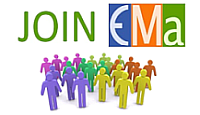Program

On this page you will find information about the detailed time table, the list and content of the lectures and other activities.
Lectures
Introduction to the School (1h)
I. Basic concepts (4h30)
- Fields, Units, Magnetostatics: Laurent Ranno, Grenoble, France [ Abstract | Slides ]
- Magnetism of atoms and ions: Wulf Wulfhekel, Karlsruhe, Germany [ Abstract | Slides ]
II. Magnetism in matter (7h30)
- Mean field theory of magnetic ordering: Wulf Wulfhekel, Karlsruhe, Germany [ Abstract | Slides ]
- Magnetic interactions: exchange RKKY. Localized and itinerant magnetism: Ingrid Mertig, Halle, Germany [ Slides ]
- Spin-orbit coupling and crystal electric field in matter, magnetic anisotropy etc: Julie Staunton, Warwick, UK [ Abstract | Slides ]
III. General tools (7h30)
- Magnetic phase transitions, symmetry and representation analysis of magnetic structures. Laurent Chapon, DIamond, UK [ Abstract | Slides ]
- Magnetic diffraction with neutrons, non-resonant and resonant X-ray scattering: Laurent Chapon, Diamond, UK [ Abstract | Slides ]
- Measurement techniques: the nano side: Olivier Fruchart, Grenoble, France [ Abstract | Slides ]
- Topology in Magnetism. Spin textures, topological numbers, topological insulators, topological spin liquids: Henrik M. Rønnow, Lausanne, Switzerland [ Abstract | Slides ]
IV. Magnetization textures and dynamics (4h30)
- Spin waves and others excitations, bulk and nano: Michel Kenzelmann, Villigen, Switzerland [ Abstract ]
- Domains and domain walls in ferroics and multiferroics: Andrés Cano, Bordeaux, France [ Abstract | Slides ]
- Magnetization processes in bulk and nano under field, current, strain, light, heat: Christian Back, Regensburg, Germany [ Abstract | Slides ]
V. Materials and effects (12h)
- Multiferroics: Andrés Cano, Bordeaux, France [ Abstract | Slides ]
- Transport and magnetotransport: Laurent Ranno, Grenoble, France [ Abstract | Slides ]
- Magnetic frustration (bulk and nano): Benjamin Canals, Grenoble, France [ Abstract | Slides ]
- Skyrmions and other chiral textures: Henrik M. Rønnow, Lausanne, Switzerland [ Abstract | Slides ]
IX. Career perspectives (3h)
Two contributions are scheduled from outside the world of lab research. These are intended to promote thinking about economical, ethical or societal issues, and provide an opportunity to discuss and debate about career opportunities for PhD scientifists beyond their defense.
Other activities
Practicals (4-6h)
Practicals are organized to practice the use of numerical, analytical or experimental techniques, related to topics covered by the lectures. Computers will be provided on-site and readily setup for the practicals. Each practical is typically 2-4h. Attendees will be asked on-site for their wishes to attend such or such practicals, however it is not possible to attend all of them. On the average, two to three practicals may be attended by each participant. Below is a list of practicals secured so far. The list will be updated on a regular basis.
- Getting a grasp of frustration: Benjamin Canals, Grenoble, France [ Abstract ]
- Units in Magnetism: Olivier Fruchart, Grenoble, France [ Questions | Blackboard shot | Answers ]
- An introduction to magnetism of ferrimagnets: Olivier Isnard, Grenoble, France [ Supporting material ]
- Preparing a neutron experiment: Michel Kenzelmann, Villigen, Switzerland
- Peer reviewing a scholarly article: Yonko Millev, APS Associate Editor (American Physical Society) [ Abstract ]
- Experimental Magnetism off the lab: Laurent Ranno, Grenoble, France [ Abstract ]
- Magnetic diffraction and symmetry analysis: Virginie Simonet, Grenoble, France [ Abstract | Questions | Answers ]
Library
A library consisting of a large set of books dedicated to various aspects of Magnetism is on display during the entire School. Its purpose is first to get students aware of the existing books, get acquainted with their use, and also serve as a support for activities during the School. See the list of books on display at ESM2017.
Question-Answer sessions (5-10h)
The purpose of a research School is to provide young scientists with the basics in a working field. With this respect interactivity between students and lecturers should be promoted. Like in the previous editions, a key aspect of this interactivity is the possibility to raise questions at the end as well as during the course of the lectures. Besides, several sessions of questions take place, during which the lecturers or voluntary students present in more detail issues raised by the students during the lectures or anonymously through a question-box. See the list of questions raised in 2017.
Posters
We encourage participants to bring posters to present their work. Students are asked to present their poster in a one-slide-two-minutes presentation as an exercice to summarize their work.








